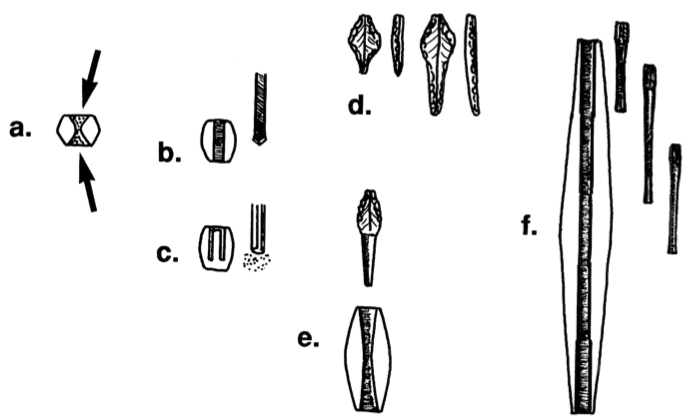Bead perforations and drill types at Harappa: a. Pecked drill hole; B. Copper drill with bevelled tip; C. copper tubular drill with abrasive; d. short and long tapered chert drilled; e. tapered cylindrical drill; f. constricted cylindrical drill in 3 sizes.
Selected results of current research ons specialized crafts at the early urban center of Harappa, Pakistan. Many crafts such as shell working, ceramics, and agate and glazed steatite bead making are represented form the earliest levels of the site and continue up to the final phase of prehistoric occupation.
The ancient site of Harappa, Pakistan, one of the largest cities of the Indus Valley Civilization (c. 2600-1900 BC - dates back on calibrated radiocarbon values), has been the focus of periodic archaeological excavation and scientific research for over 125 years. Together with the site of Mohenjo-daro, located some 590 kilometers to the south, these two cities have been the major source of information for understanding the nature of the ancient Indus cities and the civilization as a whole.

